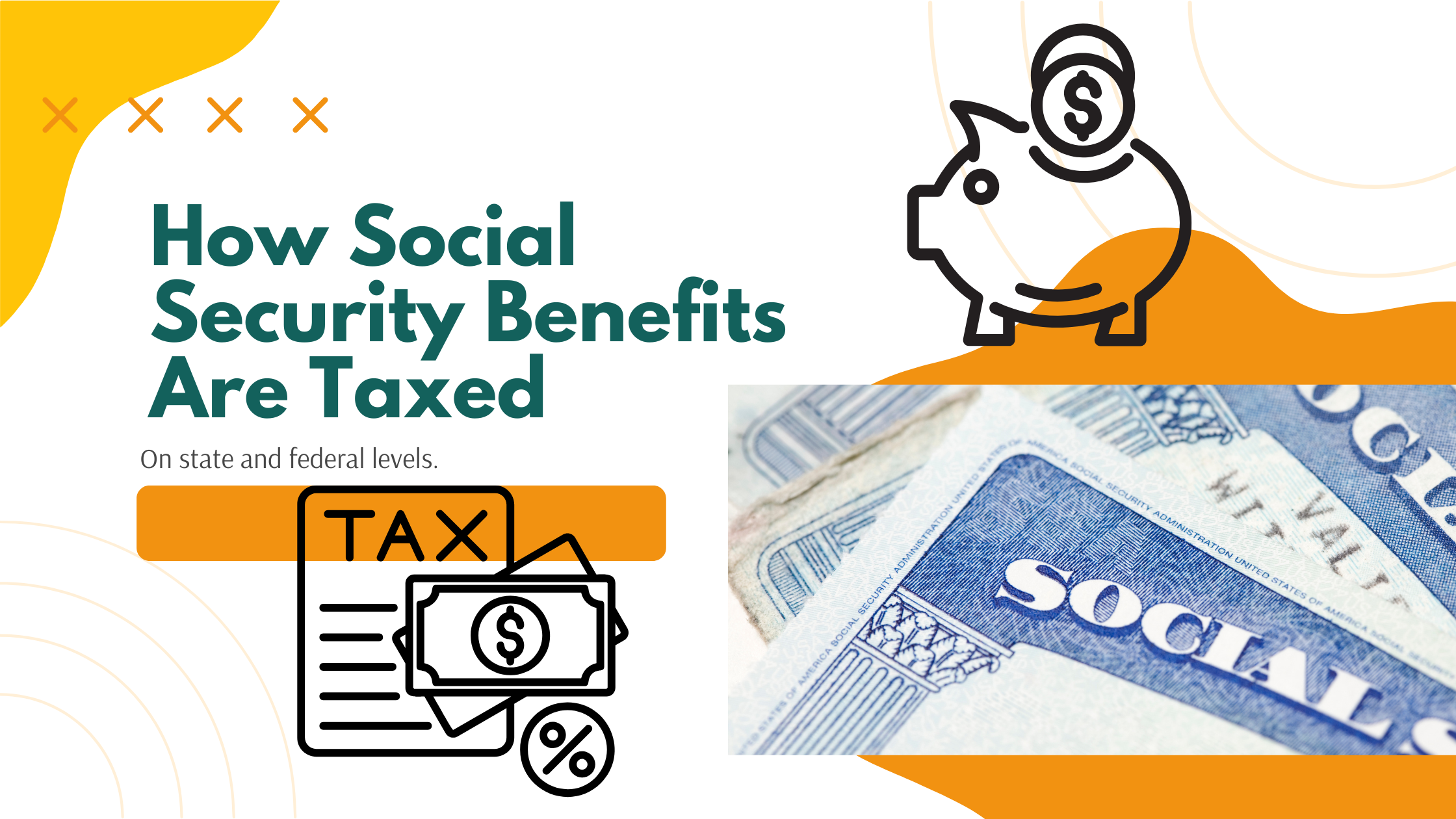FERS retirement benefit guide to Social Security benefit: Learn how much of your Social Security income is taxed. Understand how the IRS taxes benefits. Plus – federal retirement calculator
Understanding How IRS Taxes Social Security Benefits. Plus – Federal Retirement Calculators
Social Security retirement benefits are one of the three income sources for federal retirees receiving a FERS pension, with the third being withdrawals from the TSP. And managing these three income sources in retirement is the primary purpose of developing a financial plan for after a career of federal service.
How IRS Taxes Social Security Retirement Benefits
Every year, social security beneficiaries receive form SA-1099 from the social security administration (SSA), listing the total amount of benefits received that year. Next, the combined income figure must be calculated. This is done by adding the AGI (adjusted gross income) to any nontaxable interest and one-half of the social security benefits received, as shown on the SA-1099.
The following chart can then be used to figure out what percentage of your social security benefits are taxed:
| Combined Income Range |
Filing Status |
Percent of Social Security Benefits that are Taxed |
|---|---|---|
| 0 - $24,999 | Single | 0% (no tax) |
| 0 - $31,999 | Joint | 0% (no tax) |
| $25,000 - $33,999 |
Single | 50% taxed |
| $32,000 - $43,999 |
Joint | 50% taxed |
| $34,000 or higher |
Single | 85% taxed |
| $44,000 or higher |
Joint | 85% taxed |
What Portion of Your Social Security is Taxable?
The portion of your Social Security benefits that is taxable depends on your combined income, which includes your adjusted gross income, nontaxable interest, and half of your Social Security benefits. If your combined income exceeds the IRS’s specified limits, up to 85% of your Social Security benefits may be subject to federal income tax. It’s important to note that not all taxpayers will have their benefits taxed; it largely depends on your total income and other sources of retirement income.
How Does Filing Status Affect Taxable Social Security?
Your filing status plays a significant role in determining how much of your Social Security benefits are taxable. For instance, if you are married filing jointly, the threshold for taxable Social Security benefits is higher compared to filing as a single taxpayer. Married couples filing jointly can have a combined income of up to $32,000 before their benefits become taxable, whereas single filers have a lower threshold of $25,000. Understanding your filing status and its impact on your taxable benefits is crucial for accurate tax planning.
What is the Taxable Income Threshold for Social Security?
The IRS has set specific income thresholds that determine when Social Security benefits become taxable. For single filers, if your combined income is between $25,000 and $34,000, up to 50% of your benefits may be taxable. If your income exceeds $34,000, up to 85% of your benefits could be subject to tax. For those married filing jointly, the thresholds are $32,000 and $44,000, respectively. These thresholds are critical in assessing how much of your Social Security income will be taxable.
Which States Tax Social Security Retirement Income?
Neither Maryland, Virginia, nor DC tax social security payments. For those who receive social security benefits in the following states, under current tax law, social security benefits are subject to income tax:
| State | Tax Rate | Notes |
|---|---|---|
| Colorado | 4.40% | For ages 55 - 64, if less than $75,000 (single) or $95,000 (joint), benefits can be deducted |
| Connecticut | 2.00 - 6.99% | Only 25% of benefits are taxable if AGI is less than $75,000 (single) or $100,000 (joint) |
| Minnesota | 5.35 - 9.85% | Amount that is taxable is phased out if AGI is less than $105,380 (joint) or $82,190 (single) |
| Montana | 4.70 - 5.90% | No tax on social security if income is less than $25,000 (single) or $32,000 (joint) |
| New Mexico | 1.70 - 5.90% | No tax on social security is less than $100,000 (single), $150,000 (joint), or $75,000 (married filing separately) |
| Rhode Island | 3.75 - 5.99% | No tax on social security if income is less than $101,000 (single) or $126,250 (joint) |
| Utah | 4.55% | Tax credit for Social Security payments if AGI is less than $45,000 (single), $37,500 (married filing separately), or $75,000 (married) |
| Vermont | 3.35 - 8.75% | Exempt from taxes if AGI is less than $65,000 (joint) or $50,000 (single) |
| West Virginia | 2.36 - 5.12% | 65% of Social Security income included in AGI is not taxable (2025), will change to 100% in 2026. |
In addition to federal income tax, Social Security benefits may also be subject to state income tax, depending on where you live. Some states tax Social Security benefits, while others do not. Understanding how state income tax affects your benefits is crucial for effective financial planning.
Which States Tax Social Security Benefits?
Not all states tax Social Security benefits. As of 2025, 13 states tax Social Security income to varying degrees. These states include Colorado, Connecticut, Kansas, Minnesota, Missouri, Montana, Nebraska, New Mexico, North Dakota, Rhode Island, Utah, Vermont, and West Virginia. Each state has its own rules and thresholds for taxing Social Security benefits, so it’s important to understand the specific tax laws in your state. The taxable income calculation varies by state.
How State Income Tax Affects Your Retirement Benefits
State income tax can significantly impact your retirement benefits, especially if you live in a state that taxes Social Security income. The amount of tax you owe will depend on your total income and the specific tax laws in your state. Understanding how state income tax affects your benefits is crucial for effective financial planning and ensuring you have enough funds to cover your tax obligations.
Strategies to Minimize State Income Tax on Social Security
There are several strategies you can use to minimize state income tax on your Social Security benefits. One option is to consider relocating to a state that does not tax Social Security income. Another strategy is to manage your total income to stay below the taxable thresholds set by your state. By understanding the tax laws in your state and implementing effective tax planning strategies, you can minimize your state income tax liabilities and maximize your retirement benefits.
How Does Federal Income Tax Apply to Social Security Benefits?
Federal income tax applies to Social Security benefits based on your total income and filing status. Understanding how federal income tax affects your benefits is crucial for effective financial planning and ensuring you have enough funds to cover your tax obligations. Federal income tax on Social Security benefits is determined by your total income, including Social Security benefits and other sources of retirement income. The IRS has specific rules and thresholds that determine how much of your benefits are subject to federal income tax. Understanding these rules is crucial for accurately assessing your tax liabilities and planning your finances.
Impact of Other Retirement Income on Social Security Taxation
Other sources of retirement income, such as IRA distributions and pensions, can impact the taxation of your Social Security benefits. These sources of income can increase your total income and push you into a higher tax bracket, resulting in a larger portion of your Social Security benefits being subject to federal income tax. Understanding how other retirement income affects your tax liabilities is crucial for effective financial planning.
Tax Implications for Social Security Recipients of Disability Benefits
Disability benefits are subject to different tax rules compared to social security taxes for retirement benefits. Understanding the tax implications for disability benefits is crucial for effective financial planning and ensuring you have enough funds to cover your tax obligations.
How to Report Social Security Disability Benefits on Your Tax Return
Reporting disability benefits on your federal tax return involves understanding the specific tax rules and thresholds that apply to your situation. You will need to include your disability benefits as part of your total income and determine how much of your benefits are subject to federal income tax. Understanding how to report your disability benefits accurately is crucial for ensuring you comply with IRS regulations and avoid potential penalties. Financial advisors or a tax professional can assist in determining the social security taxable amount.
Federal Retirement Income Calculators
Federal retirement income calculators help government employees estimate their retirement benefits based on factors like salary, years of service, and retirement system (FERS or CSRS). Here are a few key tools:
- Thrift Savings Plan calculator – This tool provides a broad estimate of retirement income from Thrift Savings Plan (TSP) annuities and non-TSP savings.
- FERS Pension Calculator: Provides a ballpark estimate of annuity payments based on salary, years of service, and retirement age.
- FERS Supplement Calculator: For FERS workers under age 62 who anticipate receiving the special retirement supplement (SRS), this tool helps calculate that amount.
How PlanWell Financial Can Help Federal Employee Retire Confidently
A financial planner that specializes in federal benefits offers several advanced features tailored for federal employees planning their retirement. Some key aspects include:
- Fed-Expert Financial Blueprint: A proprietary process designed to help federal employees navigate retirement planning with personalized guidance.
- Comprehensive Federal Benefits Report: Provides detailed insights into CSRS, FERS, survivor benefits, FEGLI, FEHB, Medicare, TSP, and other federal retirement components.
- Educational Resources: A learning center with over 500 articles covering federal benefits and financial planning, including free federal retirement webinars.
- Certified Financial Planners: Advisors hold ChFEBC℠, CFP®, and AIF® designations, ensuring expert guidance.
Reach Out to Us!
If you have additional federal benefit questions, contact our team of CERTIFIED FINANCIAL PLANNER™ (CFP®), Chartered Federal Employee Benefits Consultants (ChFEBC℠), and Accredited Investment Fiduciary (AIF) professionals. At PlanWell, we are federal employee financial advisors with a focus on retirement planning. Learn more about our process designed for the career fed.
Preparing for federal retirement? Check out our scheduled federal retirement workshops. Sign up for our no-cost federal retirement webinars here! Make sure to plan ahead and reserve your seat for our FERS webinar, held every three weeks. Want to have PlanWell host a federal retirement seminar for your agency? Reach out, and we’ll collaborate with HR to arrange an on-site FERS seminar.
Want to fast-track your federal retirement plan? Skip the FERS webinar and start a one-on-one conversation with a ChFEBC today. You can schedule a one-on-one meeting here.










